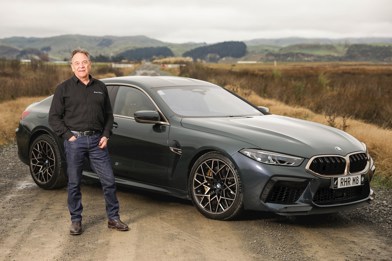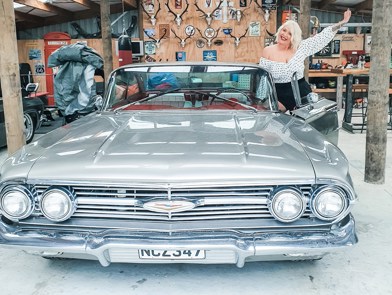Incredible fit and finish, superb Bowers & Wilkins audio, knurled knobs galore, plush surfaces that extend all the way to the floor … it’s only February, but we may already have a winner in the unofficial Best Car Interior stakes.
At some point between Scott McLaughlin’s famously sweary live TV outburst and the introduction of its funky XC40, Volvo became rather adept at crafting exquisite cabins. And its newly launched S60 and V60 are no exception. Both models line up as interesting alternatives to the likes of the BMW 3-Series, Mercedes-Benz C-Class, and Audi A4. An intimidating group of rivals for sure, but Volvo’s pairing has a few tricks up its sleeve.
Be warned … things are about to get complicated.
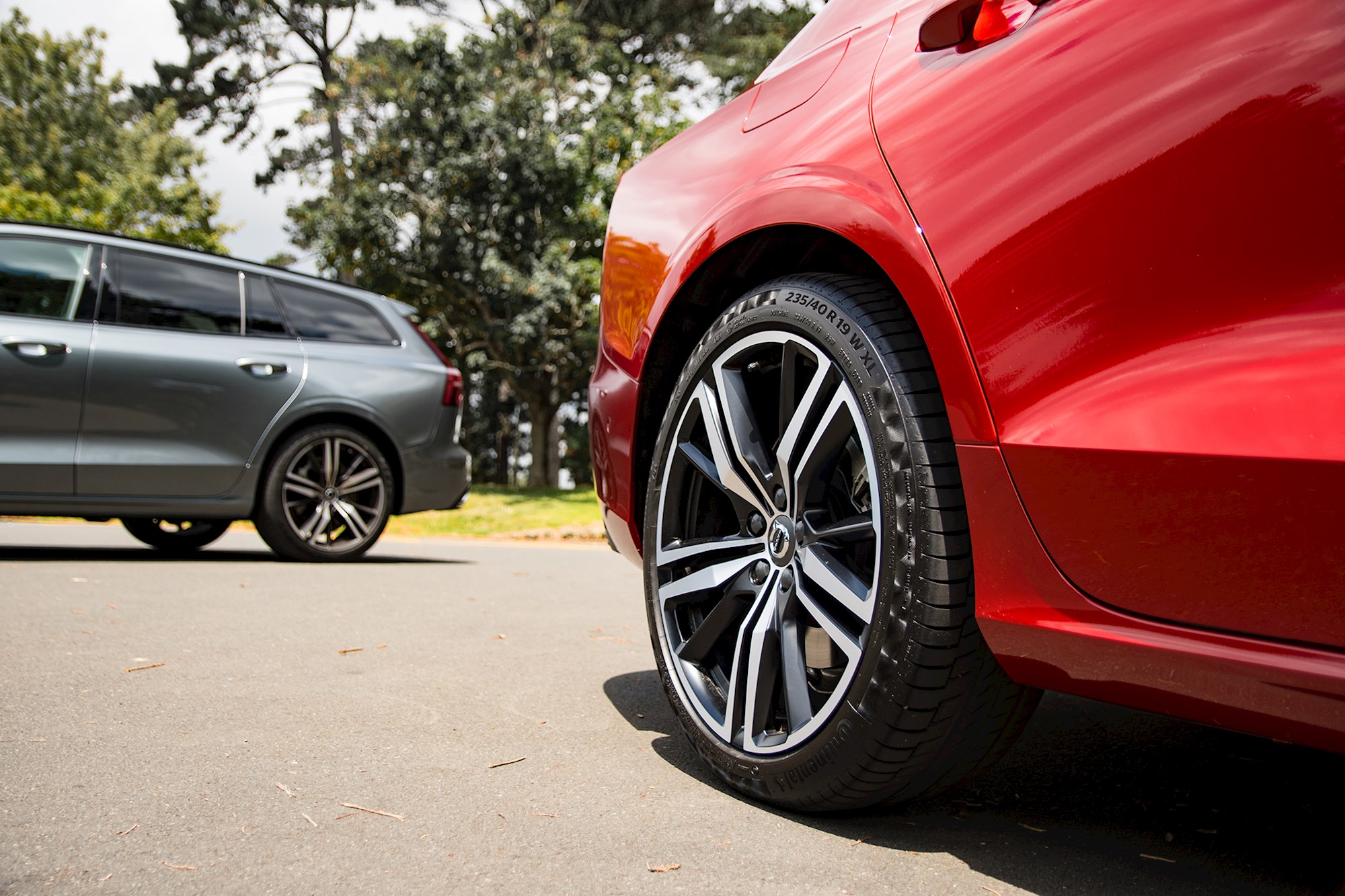
Along with having two body styles — S60 sedan and V60 wagon — Volvo’s mid-sizer has three trim levels and two core powertrains. Momentum, Inscription, and the flagship R-Design denote the three trim levels, while T5 (2.0-litre turbocharged four) and T8 (2.0-litre twin charged plug-in hybrid) denote the two engines. And every model comes with all-wheel drive.
Volvo proudly exclaims that sedan and wagon pricing across the line-up is identical, but that’s only in part because the sedan is exclusively sold here in R-Design T5/T8 format — meaning that the entry-level $74,900 Momentum and mid-spec $79,900 Inscription are wagons only. The red T5 R-Design sedan in our test is priced from $82,900, while the silver T8 plug-in wagon is priced from $114,900.
All of the above come standard with radar cruise, Pilot Assist, and blind-spot monitoring — plus dimming mirrors, a hands free opening tailgate/boot, and more. Opting for an R-Design model adds a suave body-kit, 19in diamond-cut wheels, and Nappa leather buckets along with tech goodies like parking assist, a 360 degree camera, and 4-zone climate control.
A sympathetic pat on the back to those managing to keep up.
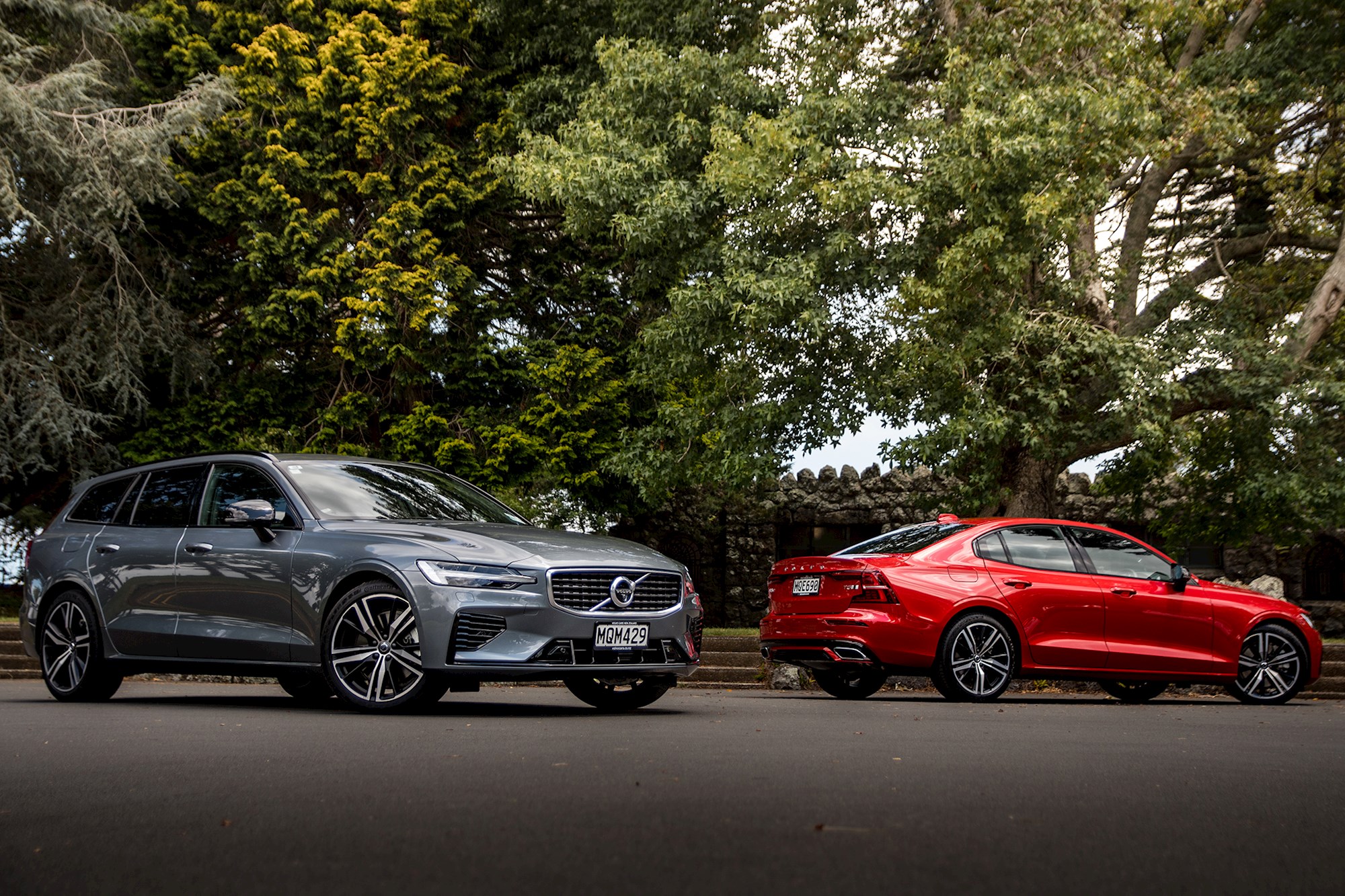
Pilot Assist perhaps requires a little more fleshing out. Volvo has always been a brand on the cutting edge of safety, so it's no surprise that Pilot Assist — its level 2 autonomous driving system — is one of the sharpest in the business. It steers, accelerates, and brakes for the driver with above average conviction and execution on well marked bits of motorway. It's still aeons away from the level 5 dream (or nightmare, depending on your perspective), but it functions as yet another example of how committed Volvo is to doing safety well.
From some angles then, Volvo’s handsome new pair is sharp value. The Momentum V60 undercuts its BMW 3-Series equivalent at sticker by almost 10 grand, as does the T5 sedan — plus each packs more equipment and all-wheel drive as a handy bonus. On the flipside, however, is the fresh-off-the-boat BMW 330e, which undercuts Volvo’s T8 by about $25,000. Volvo’s rebuttal to BMW’s undercut uppercut would be to point out the T8’s stronger performance chops. And, they’d have a point.
The 192kW/400Nm T5 petrol engine doesn’t present a huge amount to write home about. A 0–100km/h time of 6.3 seconds in R-Design sedan form is impressive on paper, but in real-world practice it’s best suited to urban driving and long-distance cruising. Stab the throttle and you’re met with a significant wait for the 8-speed Geartronic automatic to react, followed by strained response from the engine.
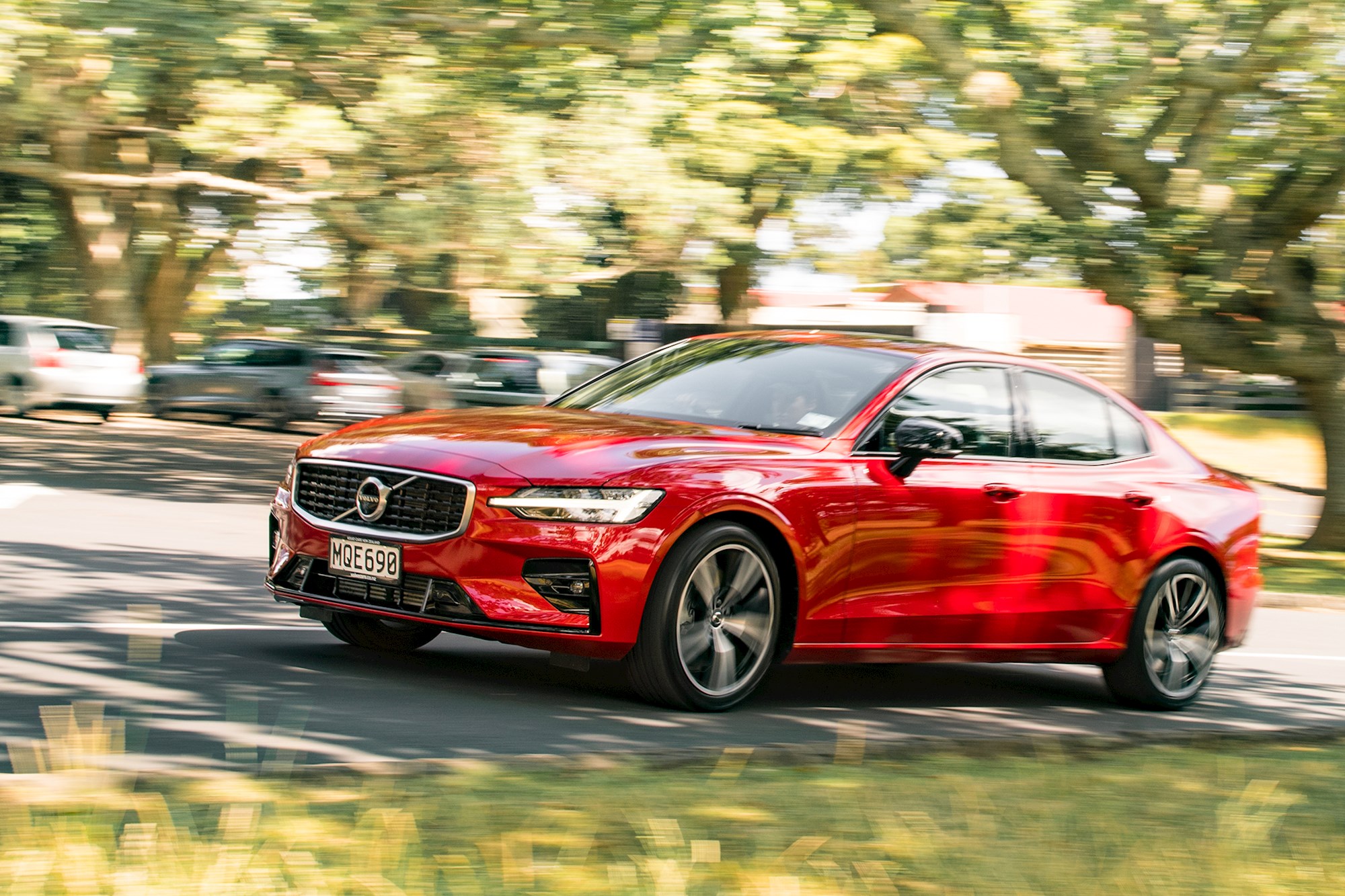
However, once you introduce Volvo’s twin charging into the mix (with a lick of electrification), things get much more compelling. The T8’s Polestar Engineered petrol engine alone makes 246kW (54kW more than the T5), and the added electric motor hurls another 65kW into the mix.
With all of the petrol engine’s power sent to the front wheels and the electric motor exclusively looking after the rear wheels, a total output of 311kW makes the T8 a surprisingly fun family hauler. Well, surprising for those not familiar with the Swede’s reputation for bonkers turbocharged wagons, anyway.
Blunt shoves of throttle are met in the T8 with an initial sharp jolt of power, followed by momentary lag, then followed by a big surge to finish. It’s a curious and oddly addictive sensation that results from an engine balancing electric, turbocharged, and supercharged priorities simultaneously. Volvo’s twin charge technology has been around for a generation or two, but still stands out in its ability to rearrange the contents of the boot with a twitch of the right foot.
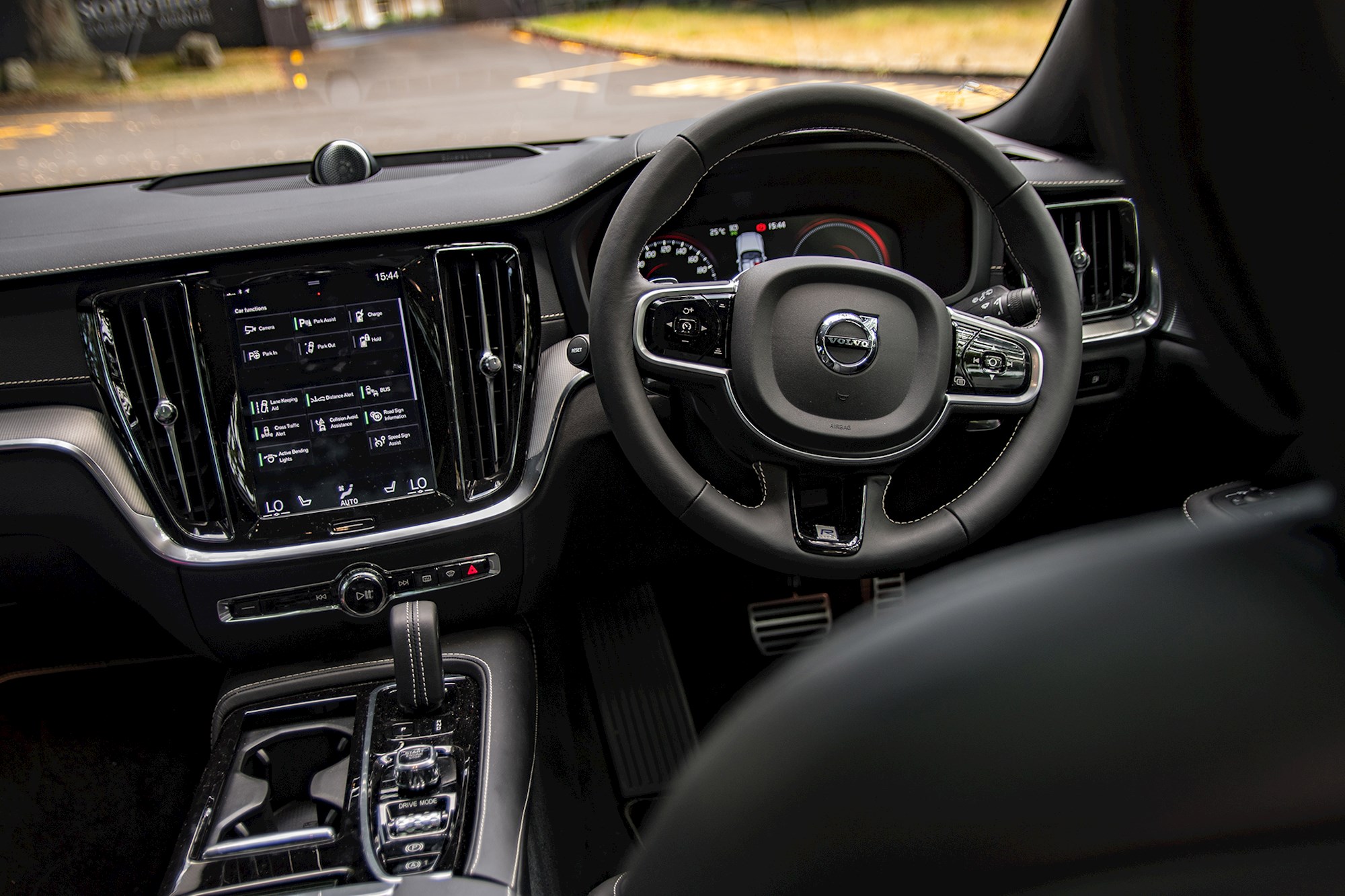
The 8-speed’s shortcomings aren’t nearly as obvious in the T8, and that makes it easier to appreciate the rest of the Volvo’s driving experience. The 235/40 Continental PremiumContact 6 shoes combine well with Volvo’s all-wheel drive system to make the S60 and V60 feel incredibly stable at speed.
There’s none of that deft ‘keeping you on your toes’ rear-driven thrill, but nevertheless the T8 feels like it’ll be able to keep up with just about anything. Its suspension tuning plays a big role in the safe-as-houses cornering stability, although whether that's a sound trade for ride quality that's occasionally choppy on larger divots and bumps is up for debate.
A mid-price non-hybrid twin-charged T6 would be a curious addition to the Kiwi line-up, but unfortunately it's not offered here.
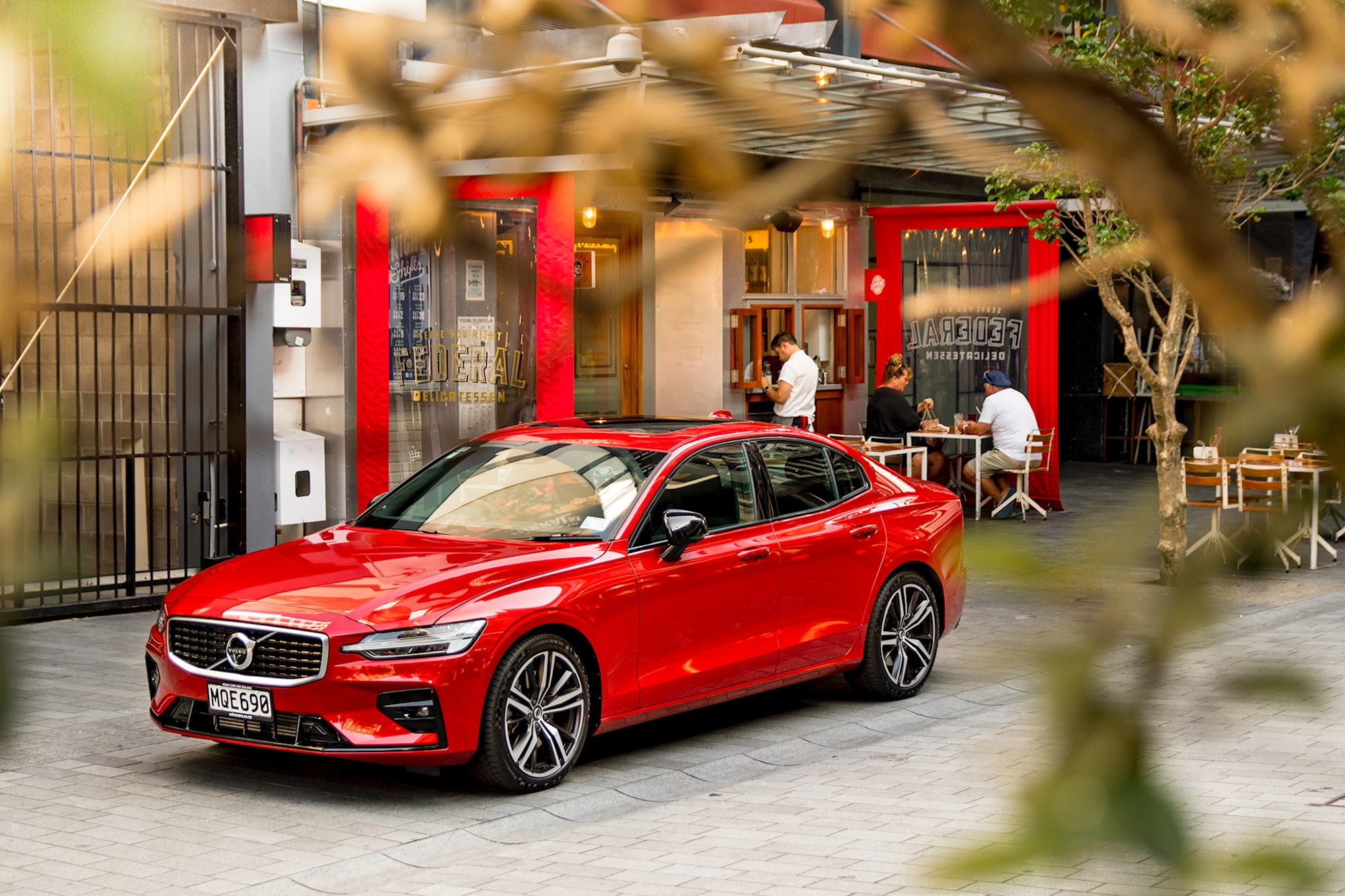
If there’s an area where the T8’s high-tech gumbo engine falls short, it’s in its green convictions. We were able to achieve 2.3L/100km with a battery range of 40km (which is closer to 30–35km in reality). That’s all fine — impressive even, given how quick it is — but we wish there was an actual rigid ‘pure EV’ drive mode.
The oddball split in the S60/V60 range is indicative of Volvo’s faith in sales of the sedan, which sadly continues to circle the drain as past powerhouses like the Holden Commodore and Honda Accord depart the market. It’s not all bad, though, since the V60 is the better bet anyway.
Apart from the fact that few things in this world are cooler than a Volvo wagon, the V60 is also far more practical than its sedan cousin — capable of being crammed with 529L worth of Abba cassettes, PewDiePie merchandise, or IKEA bed-side tables. Fold the rear seats flat, and volume increases to 1441L — making the V60 larger in both metrics than the XC60 SUV. And perhaps best of all, those figures are unchanged for the hybrid T8, despite all the added mechanicals under the floor.
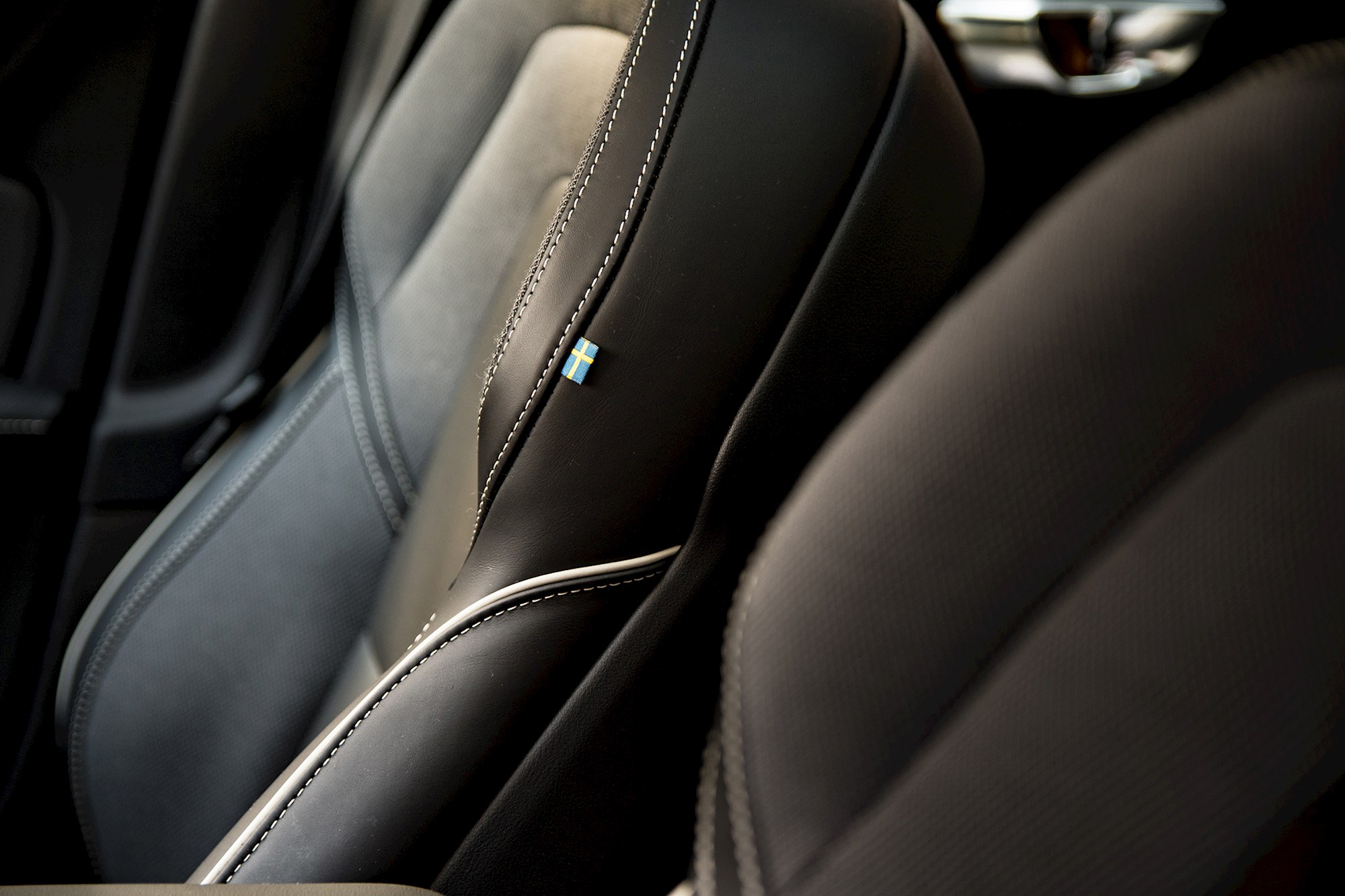
Still, there’s room for improvement; like the very tall transmission tunnel that kills foot room for the fifth passenger and the messy, very un-Volvo-like way that the hybrid information is displayed in the 12.3in digital cluster. Headroom is also a little compromised too by the gaping panoramic glass roof.
But, by and large, the Volvo twins remain practical and compelling. They're not as engaging as the German establishment, but they're also far more unique, sharper on price, and oh so effortlessly charming.
























